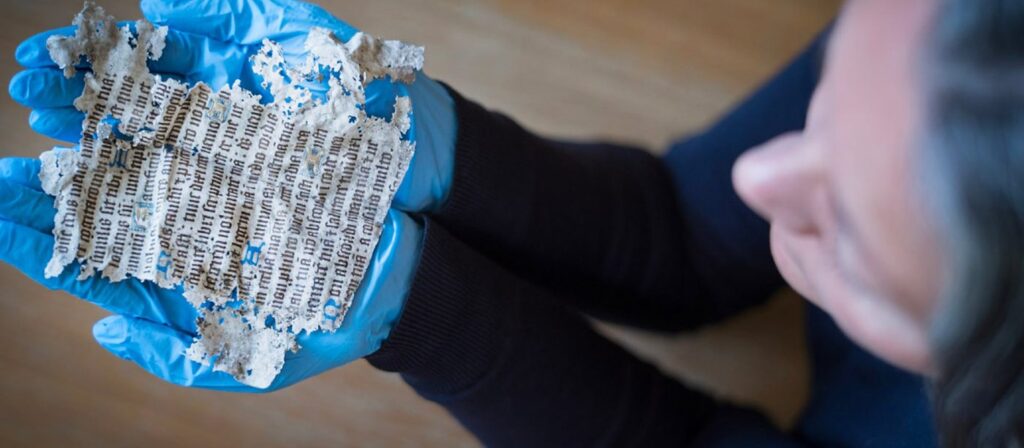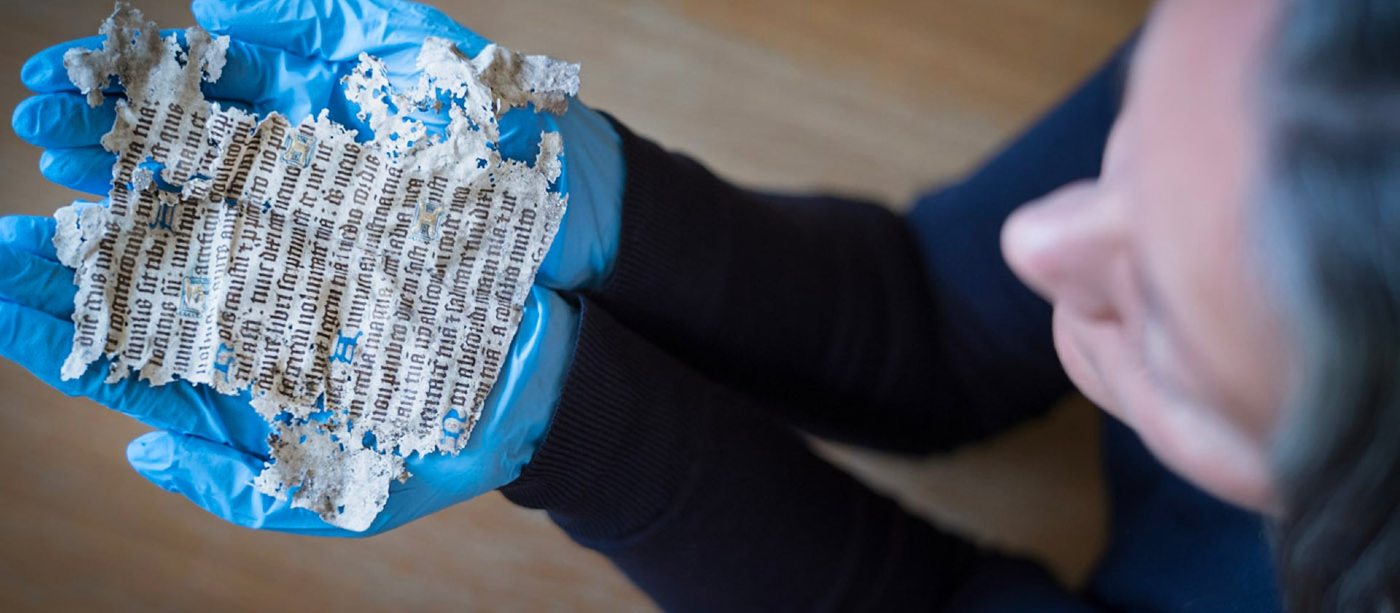Picture yourself in the dusty attic of a moated Tudor manor house built sometime in the late 1500s. For the first time in hundreds of years, the floorboards are lifted. What lies beneath? Buried treasure, of course.

Sounds like something straight out of Hollywood, right?
Nope. It’s actually something that took place in Norfolk, England during the pandemic. While the adventure might have lacked the special effects of an Indiana Jones blockbuster, this recent case of ‘real-life imitates cinematic art’ still turned up some pretty amazing finds.
The story begins with the $7.8 million-dollar roof restoration project of Oxburgh Hall, a National Trust site. Archaeologist Matt Champion, working on his own during the lockdown, was conducting a fingertip search of the rafters when he unearthed a stash of more than 2,000 archaeological specimens, some dating back as far as the 15th century.
According to National Trust curator Anna Forrest, who oversees the project, “When the boards came up, we could see a wave pattern in the debris which showed it had been undisturbed for centuries.”
RELATED: The First Time a 10-Year-old Boy Uses His Birthday Metal Detector, He Unearths a Centuries-Old Sword
The dust, sometimes inches deep, was covering a layer of lime plaster. As unpalatable as that might sound, to paraphrase Martha Stewart, it turned out to be a good thing. “[The lime plaster] drew out the moisture from the debris and resulted in much of it being perfectly preserved over the centuries,” Forrest said.
Several of the items recovered were recent artifacts likely dating to the WWII era, notably some empty Woodbine cigarette packs and a vintage box of Terry’s chocolates, minus the chocolates.
But among the most exciting discoveries was a cache of high-quality Elizabethan and Georgian textiles and embroidery scraps. Ironically, many of the most exciting finds were woven into a pair of long-deserted, ossified rat’s nests. (At least it wasn’t snakes, Indy.)
Love them or hate them, the vermin were also responsible for preserving fragments of some 450-year-old handwritten music as well as a page from 1568 copy of John Fisher’s The Kynge’s Psalmes.
In non-rodent-related news, a construction worker later found the rest of the book, nearly intact, stashed away in a cubbyhole in the attic, while another worker discovered a 600-year-old parchment fragment containing part of the Latin Vulgate Psalm 39 decorated in gold leaf and illuminated in bright blue ink.
Forrest noted the page likely came from a daily prayer book known as a book of hours. “The use of blue and gold for the minor initials, rather than the more standard blue and red, shows this would have been quite an expensive book to produce,” she said in an interview with The Guardian.
“It is just the most exquisite thing and to have found it literally in a pile of rubble is probably… well, it’s unheard of for the National Trust, that’s for sure.”
“We had hoped to learn more of the history of the house during the re-roofing work… but these finds are far beyond anything we expected to see,” Russell Clement, General Manager at Oxburgh Hall told the National Trust. “This is a building which is giving up its secrets slowly. We don’t know what else we might come across—or what might remain hidden for future generations to reveal.”
MORE: Lucky Dented Penny That Saved Soldier’s Life During WWI Comes to Light 100 Years Later
Who knows? Maybe if they channel Professor Jones for a little more judicious digging, they might just turn up the holy grail after all.
PASS The Treasure On And Share The Story With Your Friends On Social Media…




















